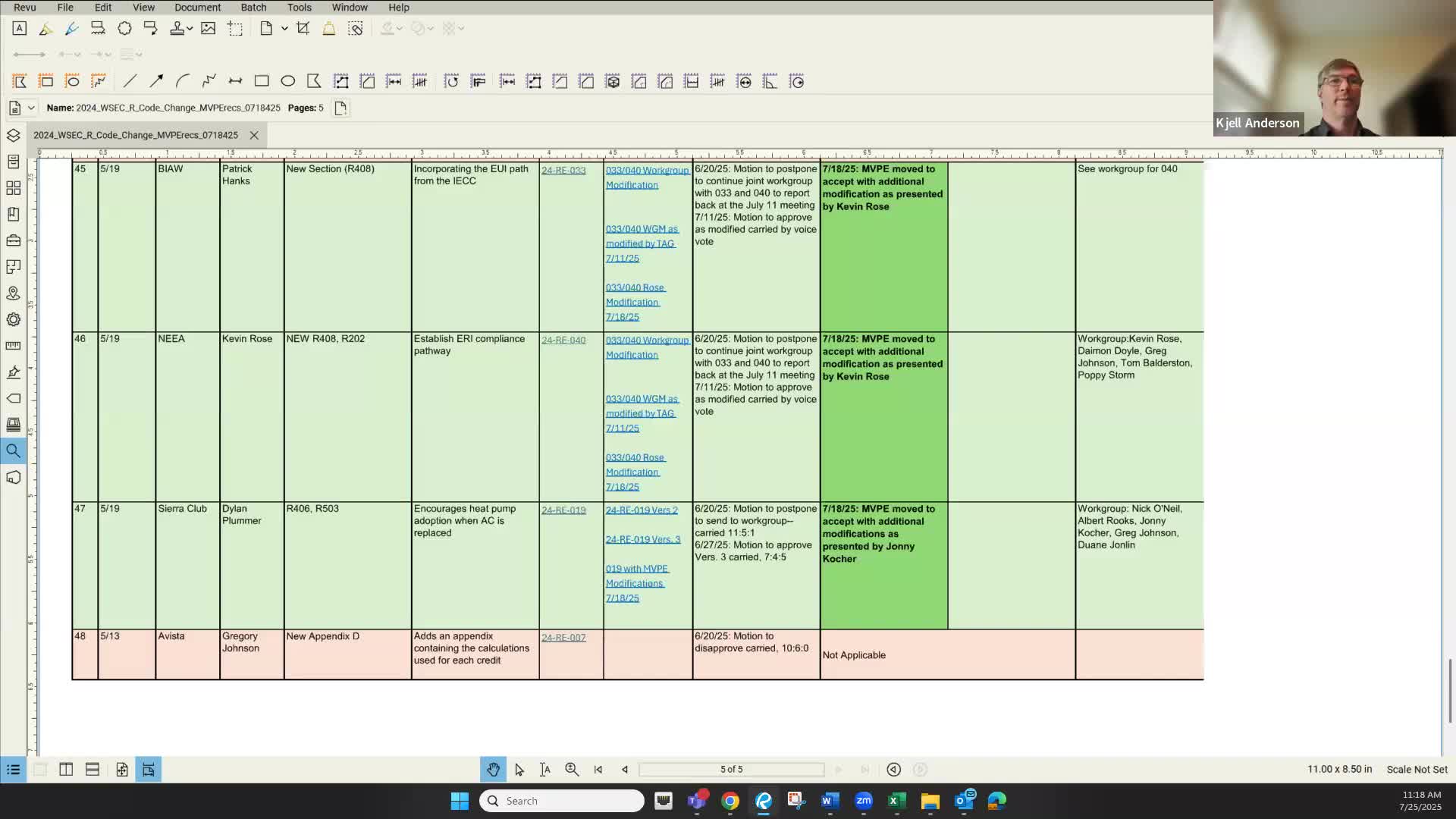MVP Committee Approves Increased Credits for PV and Battery Storage in Washington
July 31, 2025 | Building Code Council, Governor's Office - Boards & Commissions, Executive, Washington
This article was created by AI summarizing key points discussed. AI makes mistakes, so for full details and context, please refer to the video of the full meeting. Please report any errors so we can fix them. Report an error »

The Building Code Council convened on July 25, 2025, to discuss significant updates to Washington's building regulations, focusing on energy efficiency and renewable energy credits. The meeting highlighted key proposals and decisions that could impact future construction practices in the state.
One of the primary topics addressed was the longstanding 15% backstop in the Washington code. Council members emphasized that removing this provision would represent a substantial rollback in energy efficiency standards. The consensus was to maintain this backstop to ensure continued progress in energy conservation.
Additionally, the MVP committee presented a proposal to increase the allowable credits for photovoltaic (PV) systems and battery storage. Previously, the council had approved an increase in credits for PV systems from 4.5 to 5. The new proposal aimed to include battery storage as a grid-friendly option, allowing it to count alongside PV systems for energy credits. This change is expected to benefit smaller homes and enhance the overall energy efficiency of larger properties by increasing the total number of credits available.
Despite some opposition, including personal dissent from a council member who spoke against the proposal, the MVP committee ultimately passed the measure. This decision reflects a growing trend towards integrating renewable energy solutions in building practices.
In conclusion, the meeting underscored the council's commitment to maintaining energy efficiency standards while adapting to new technologies in renewable energy. The next steps will involve implementing these changes and monitoring their impact on building practices across Washington.
One of the primary topics addressed was the longstanding 15% backstop in the Washington code. Council members emphasized that removing this provision would represent a substantial rollback in energy efficiency standards. The consensus was to maintain this backstop to ensure continued progress in energy conservation.
Additionally, the MVP committee presented a proposal to increase the allowable credits for photovoltaic (PV) systems and battery storage. Previously, the council had approved an increase in credits for PV systems from 4.5 to 5. The new proposal aimed to include battery storage as a grid-friendly option, allowing it to count alongside PV systems for energy credits. This change is expected to benefit smaller homes and enhance the overall energy efficiency of larger properties by increasing the total number of credits available.
Despite some opposition, including personal dissent from a council member who spoke against the proposal, the MVP committee ultimately passed the measure. This decision reflects a growing trend towards integrating renewable energy solutions in building practices.
In conclusion, the meeting underscored the council's commitment to maintaining energy efficiency standards while adapting to new technologies in renewable energy. The next steps will involve implementing these changes and monitoring their impact on building practices across Washington.
View full meeting
This article is based on a recent meeting—watch the full video and explore the complete transcript for deeper insights into the discussion.
View full meeting
